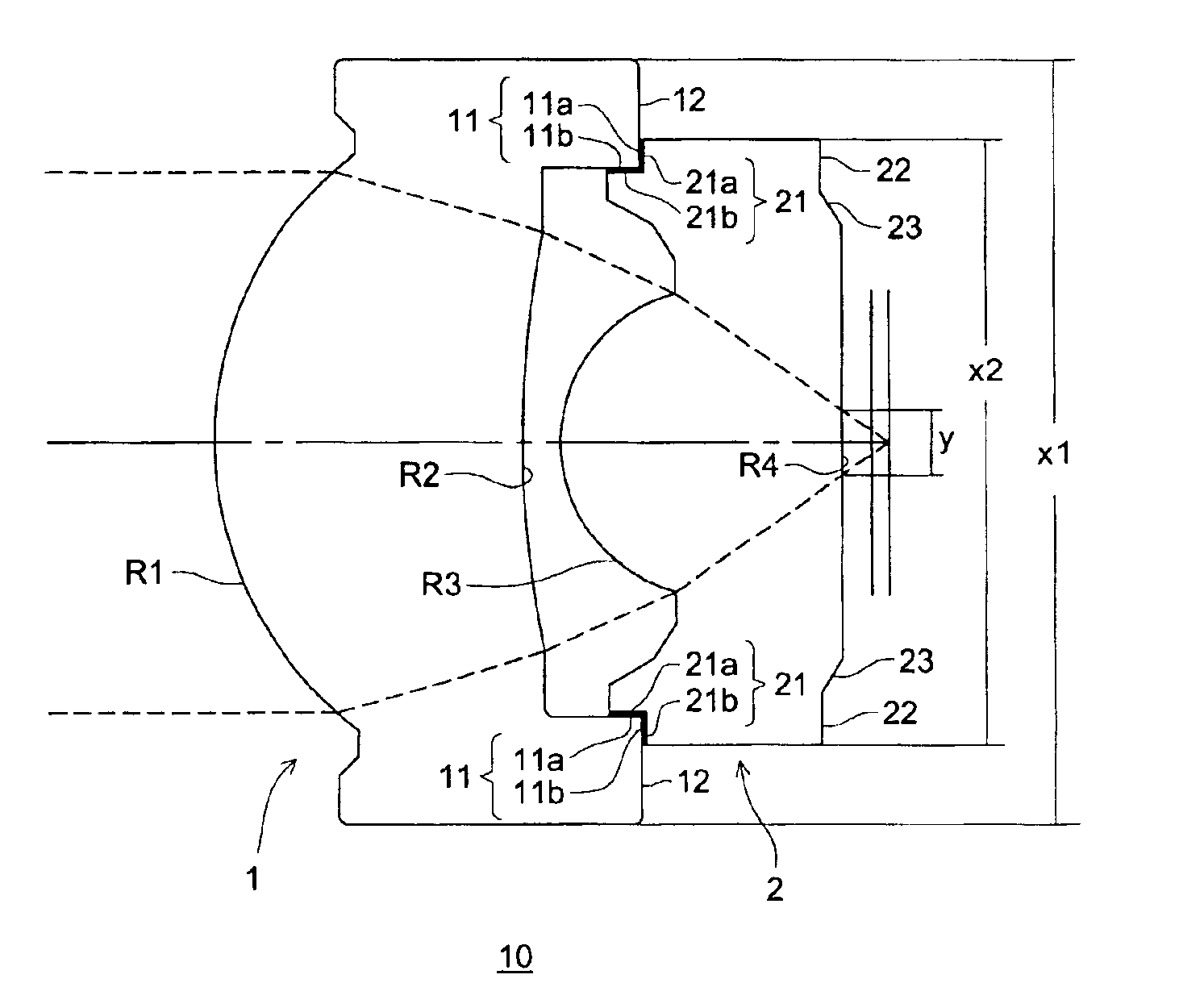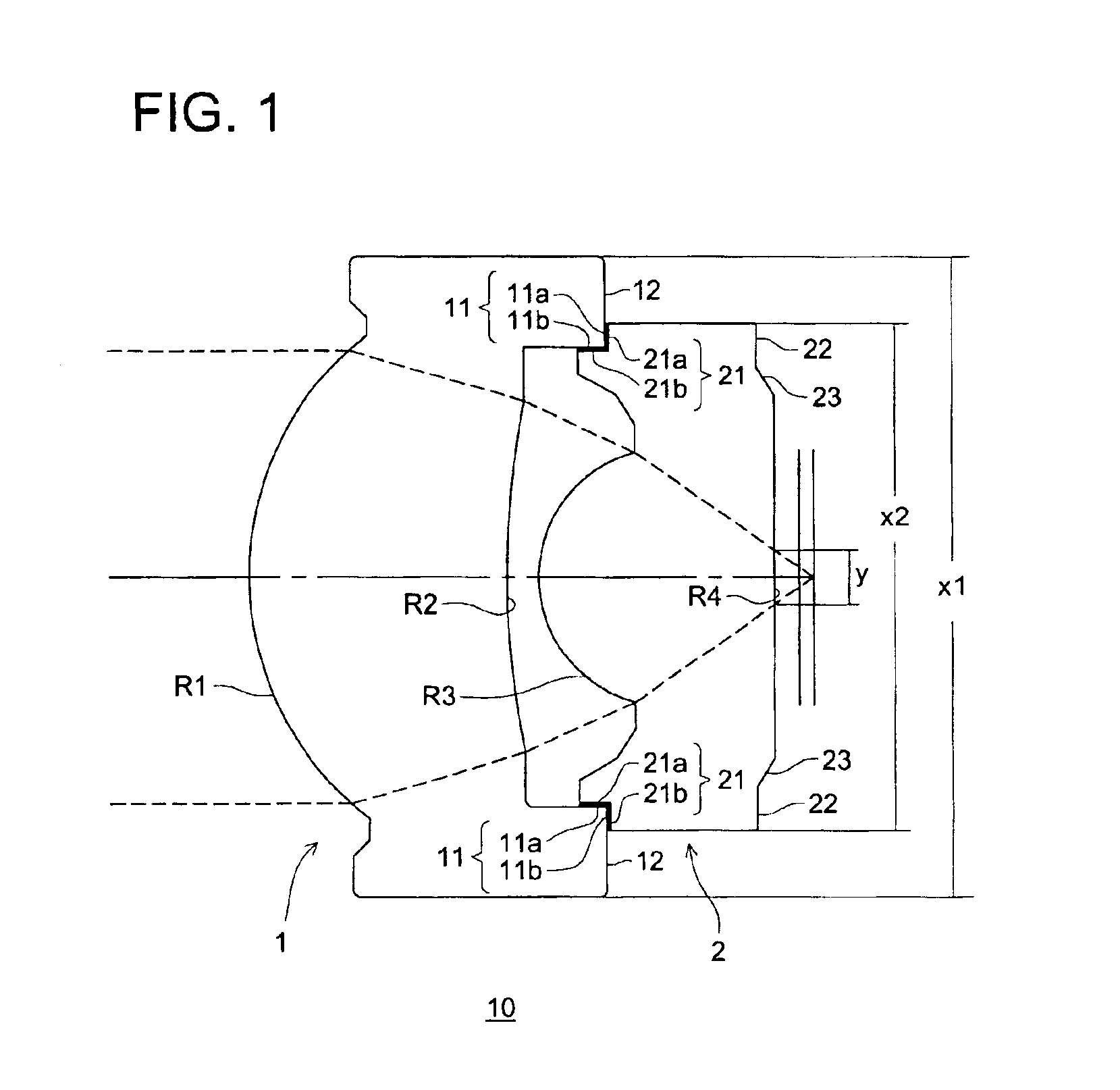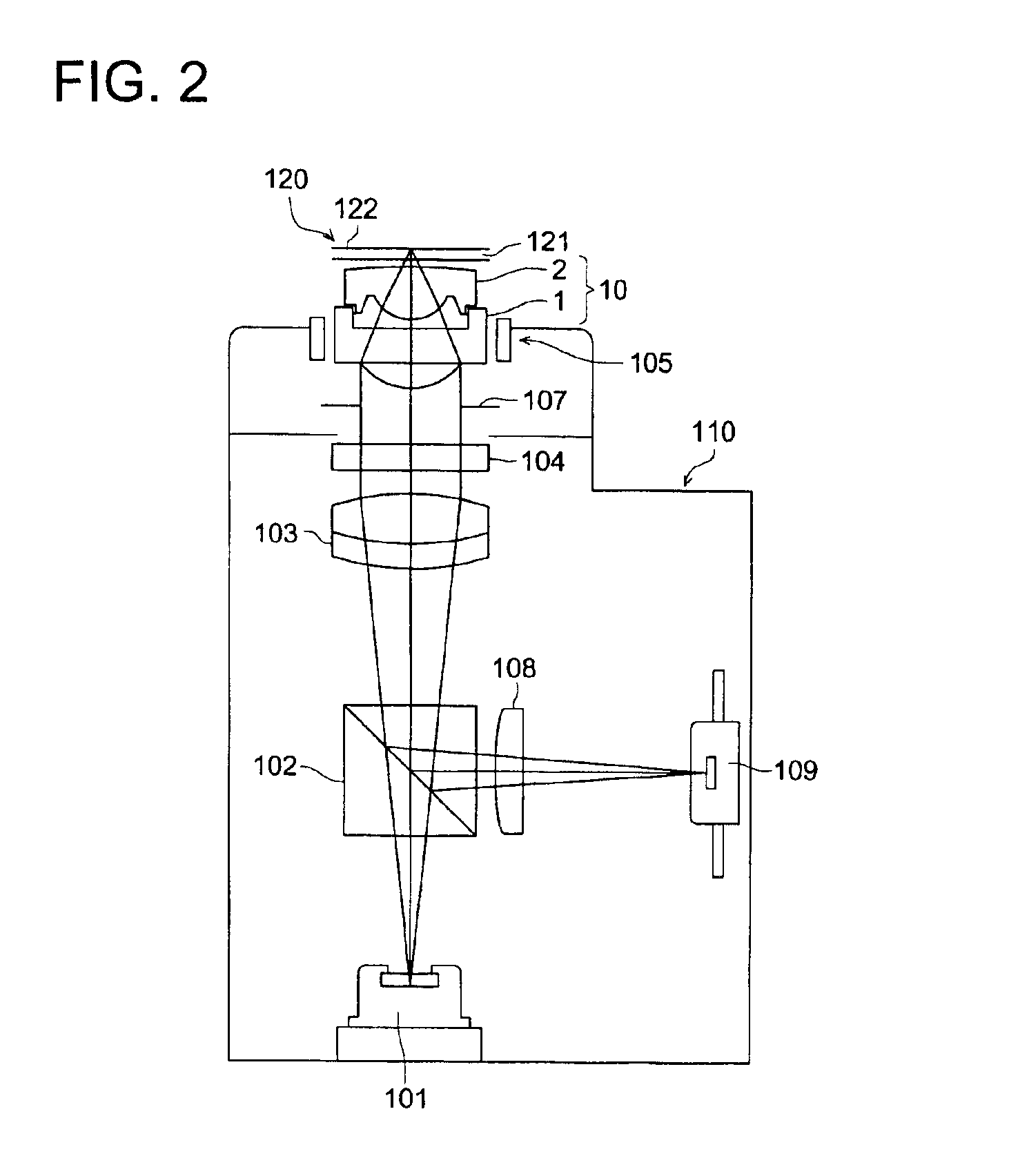Objective lens for use in optical pickup apparatus and optical pickup apparatus
a technology for optical pickups and objective lenses, applied in the direction of lenses, instruments, record information storage, etc., can solve the problems of high numerical aperture of objective lenses, high cost of plastic-molded single lenses produced by using high technology, and higher technical difficulty in metal mold manufacturing and molding
- Summary
- Abstract
- Description
- Claims
- Application Information
AI Technical Summary
Benefits of technology
Problems solved by technology
Method used
Image
Examples
Embodiment Construction
[0104]Referring to the drawings, the embodiments of the objective lens for the optical pick-up and the optical pick-up employing the objective lens for the optical pick-up of the invention to achieve the first object are explained as follows.
[0105](The Embodiment of 1—1)
[0106]FIG. 1 is a sectional view of an objective lens for an optical pick-up, and FIG. 2 is a schematic structural drawing of an optical pick-up wherein the objective lens for the optical pick-up shown in FIG. 1 is incorporated. An example of the objective lens which is structured by two plastic-molded lenses is shown in this embodiment.
[0107]In FIG. 1, objective lens 10 for an optical pick-up is composed of object side lens 1 arranged at a light source side of the optical pick-up, and image side lens 2 arranged at the opposite side of the light source of the optical pick-up, which faces an optical information recording medium, when recording information on the optical information recording medium such as the optical...
PUM
| Property | Measurement | Unit |
|---|---|---|
| coefficient of water absorption | aaaaa | aaaaa |
| coefficient of water absorption | aaaaa | aaaaa |
| wave length | aaaaa | aaaaa |
Abstract
Description
Claims
Application Information
 Login to View More
Login to View More - R&D
- Intellectual Property
- Life Sciences
- Materials
- Tech Scout
- Unparalleled Data Quality
- Higher Quality Content
- 60% Fewer Hallucinations
Browse by: Latest US Patents, China's latest patents, Technical Efficacy Thesaurus, Application Domain, Technology Topic, Popular Technical Reports.
© 2025 PatSnap. All rights reserved.Legal|Privacy policy|Modern Slavery Act Transparency Statement|Sitemap|About US| Contact US: help@patsnap.com



